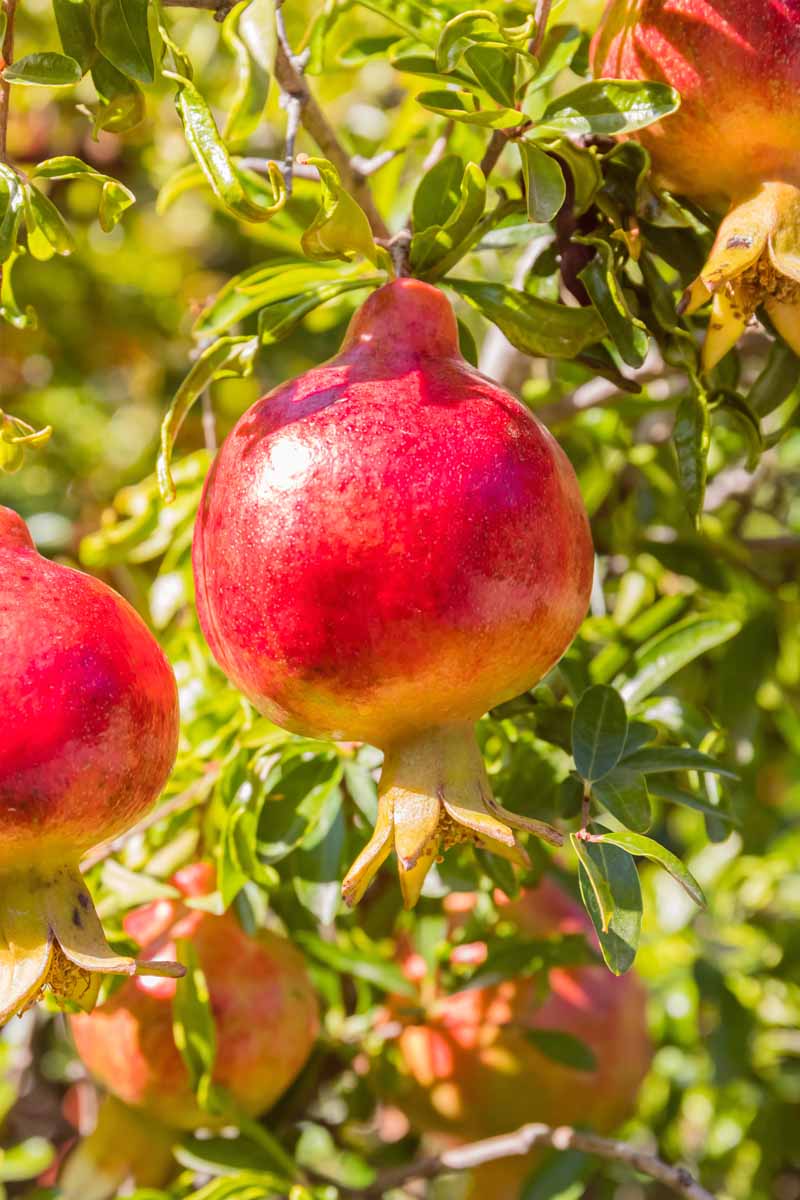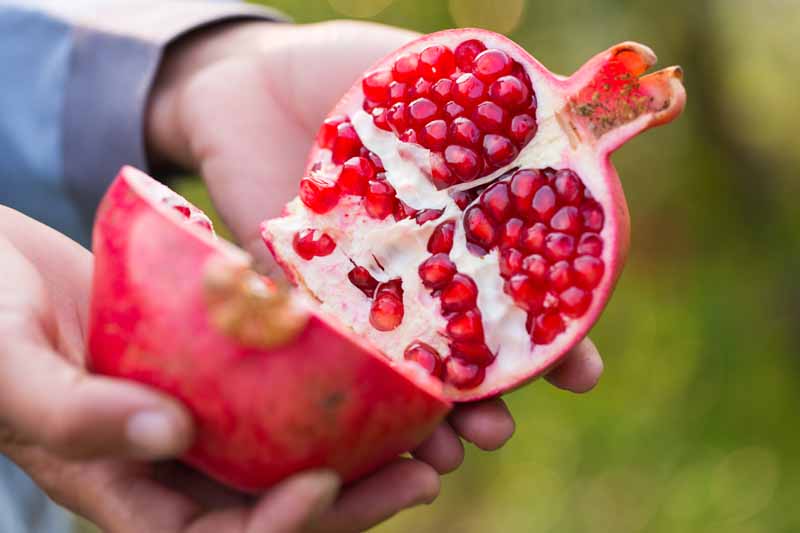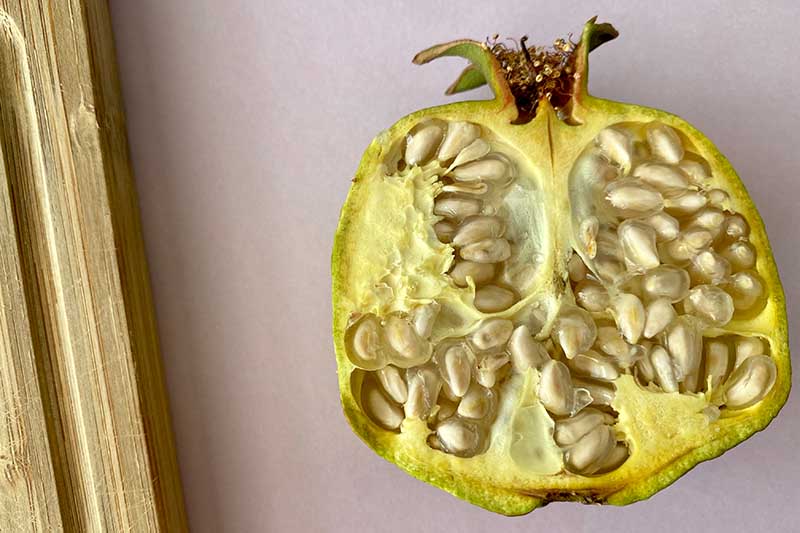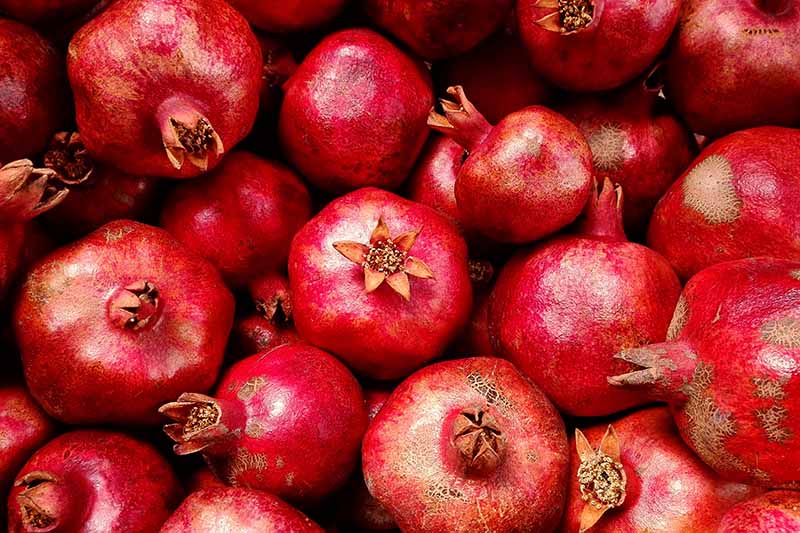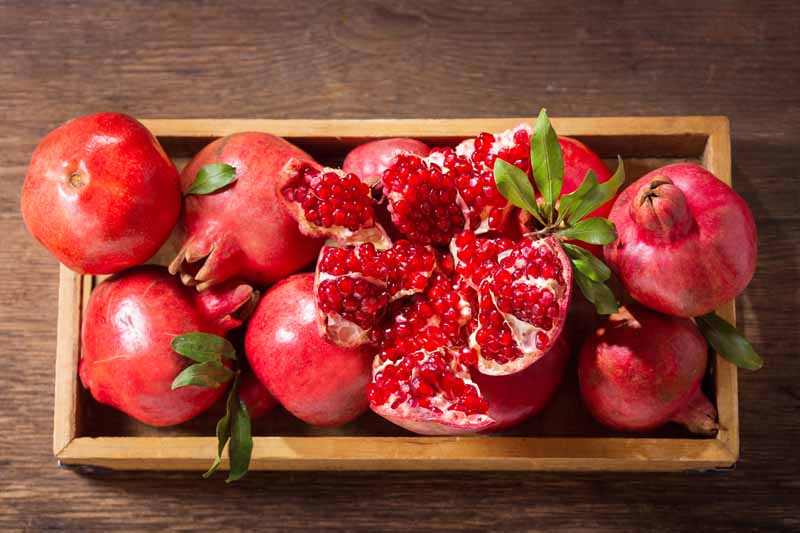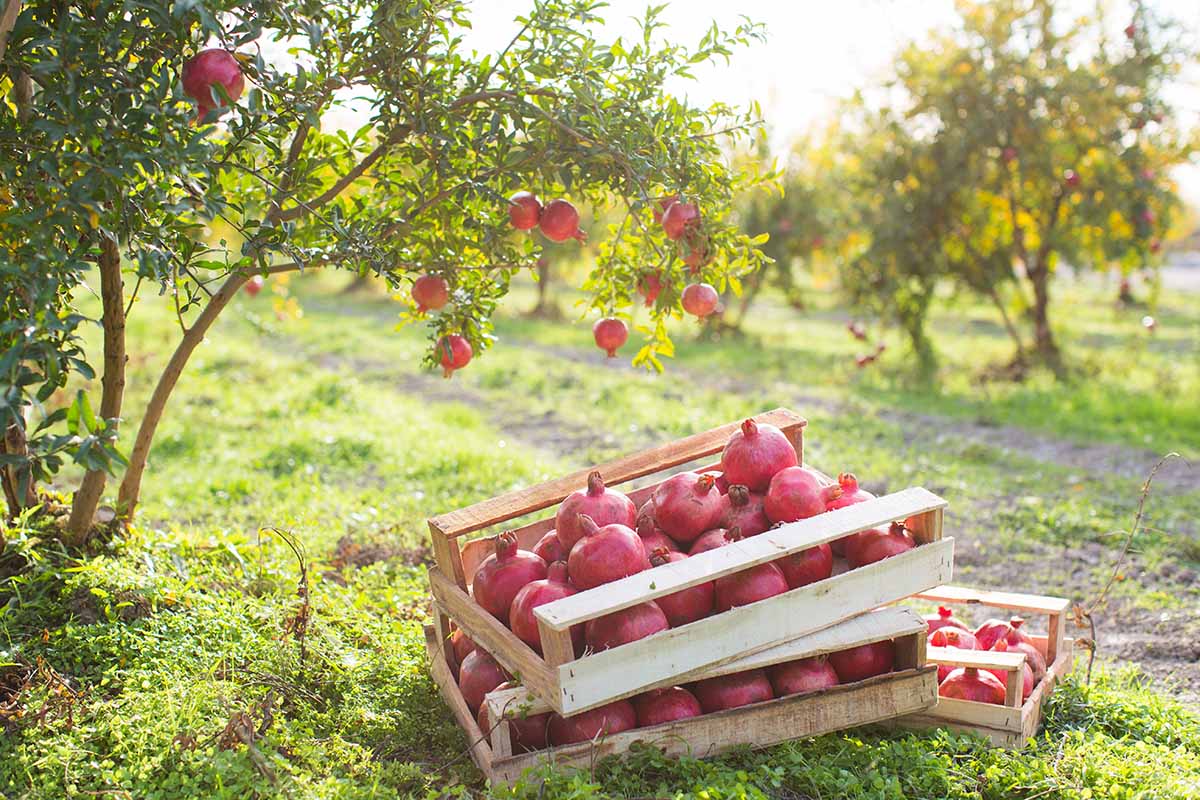The fruits can take between five and seven months – depending on the variety – to mature and ripen, ready for picking. Since they do not continue to ripen off the tree after they have been picked, it’s important to get the timing of your harvest just right. We link to vendors to help you find relevant products. If you buy from one of our links, we may earn a commission. Here’s what we’ll cover:
How to Tell When Pomegranates Are Ripe
Generally speaking, pomegranate trees will produce a reliable harvest two to three years after planting. They flower from midspring into fall, and fruits that are set in March or April will be ready for harvest between August and October, depending on the variety. It’s important to note that because pomegranate plants bloom in two to three cycles throughout the spring and summer, though some fruits may be ready to harvest, others may still need more time. Plan to make a trip out to the garden frequently during harvest season, to check on your crop and pick what’s ripe. When you go out to harvest your fruit, you’ll need to know how to identify which ones are ready to pick and which ones should be left on the tree to continue ripening. You’ll notice three primary visual cues when the fruits are ready for harvest:
The shape of the pericarpThe texture and color of the skinThe weight of the fruit
When they are ripe, rather than being round like a ball, the shape will change, taking on a boxier, flat-sided appearance. This is because the arils on the interior are filling out with flesh, and pushing against the inner chambers. The fruits have a somewhat hexagonal shape when they are fully ripe. The outer texture of the skin will appear smoother, with a leathery feel, as the interior of the fruit fills out completely. The exterior color will be its deepest for the particular variety you’re growing. For example, some yellow or pink varieties may change from green to their final mature color, while red varieties may change from pink to a deeper red. You should also inspect the area around the stem end of the fruit. If it’s pale, yellow, or greenish in color, this can be a sign that the fruit is not properly ripe. Because the plump arils have filled the interior at this point, you’ll notice that the pomegranates feel heavy for their size when they’re ready to pick, and tapping on the outside will produce a dull, slightly hollow thud. Fruit that has been left on the tree too long may start to split open which can attract pests. You can learn more about why pomegranates split open on the tree in our guide. If you do happen to accidentally collect a fruit that is not fully ripe, you’ll realize pretty quickly once you cut it open. The arils inside will be extremely hard and pale, and more opaque than they should be. The pithy sections between the seeds may also be yellow or green rather than white in those that have not matured fully.
Harvesting
Before harvesting, you should pull on some thick gardening gloves. Pomegranate trees and shrubs produce large thorns that can puncture the skin, so be sure to handle plants with care to avoid being injured. It’s best to cut the fruits free rather than pulling them off the branches because pulling can cause damage, making the plant more susceptible to disease or leading to die-off of the damaged portions. Use a set of clean, sharp garden shears and clip the stems close to the fruit. The stems are rather woody, and leaving a long stem intact could potentially cause damage to others if you’re harvesting several at a time. Place the pomegranate carefully into a basket or bucket rather than just tossing it in, to prevent bruising. Any that have split or been chewed by animals should be discarded, as they can harbor fungi and other disease pathogens that you may not be able to see with the naked eye. If you’ve applied pesticides, you may want to wash the fruits prior to storing, but be sure to allow them adequate time and exposure to airflow so they dry completely before they are stored. Moisture can lead to rotting or mold development.
Storage
Pomegranates will generally stay fresh for two to three months when stored at temperatures of between 32 and 40°F. At room temperature, it’s best to use them in one to two weeks. If you cut them open and remove the arils, these will typically last about five days in the refrigerator. You can also freeze the arils by spreading them on a baking tray or cookie sheet and placing it in the freezer for a couple of hours. Transfer the frozen arils into a zip-top bag or sealed storage container. They will keep for up to a year in the freezer. Don’t succumb to temptation and hurry though – use care when collecting those long-awaited fruits so they not only taste great, but store well for months too. You’ll be rewarded with tart and tasty fruits that are ready to eat, or to process and add to a wide array of recipes. Treat yourself to a smoothie or make some fresh juice, and you’ll see that it was worth the wait! What are your favorite ways to prepare pomegranates? Share some recipes or prep tips with us in the comments below, and feel free to reach out if you have any questions about picking your crop. And for more information on growing pomegranates in your garden, have a read of these guides next:
How to Identify and Control Pomegranate Pests and DiseasesPropagating Pomegranates from SeedHow and When to Fertilize Fruiting Pomegranates

